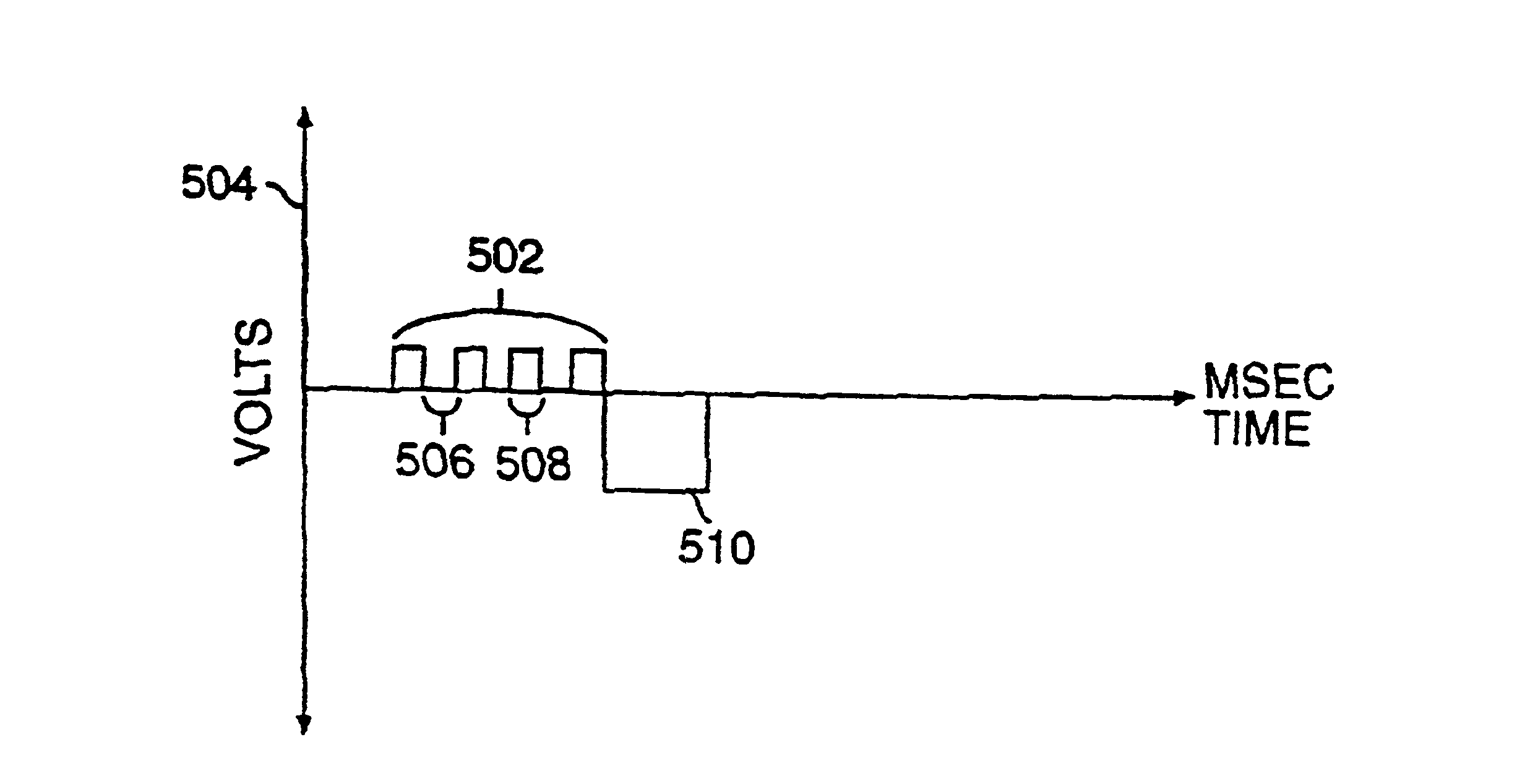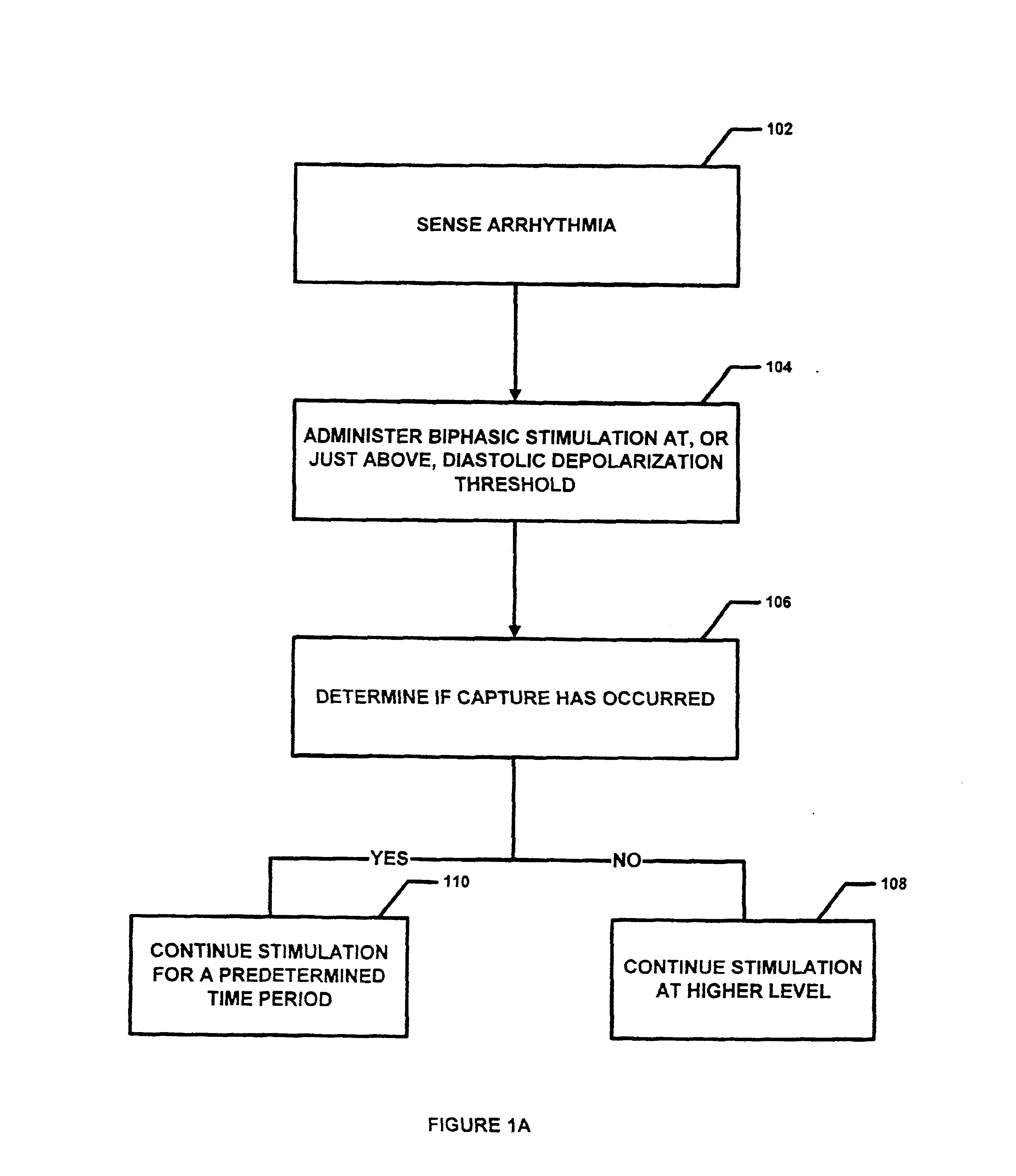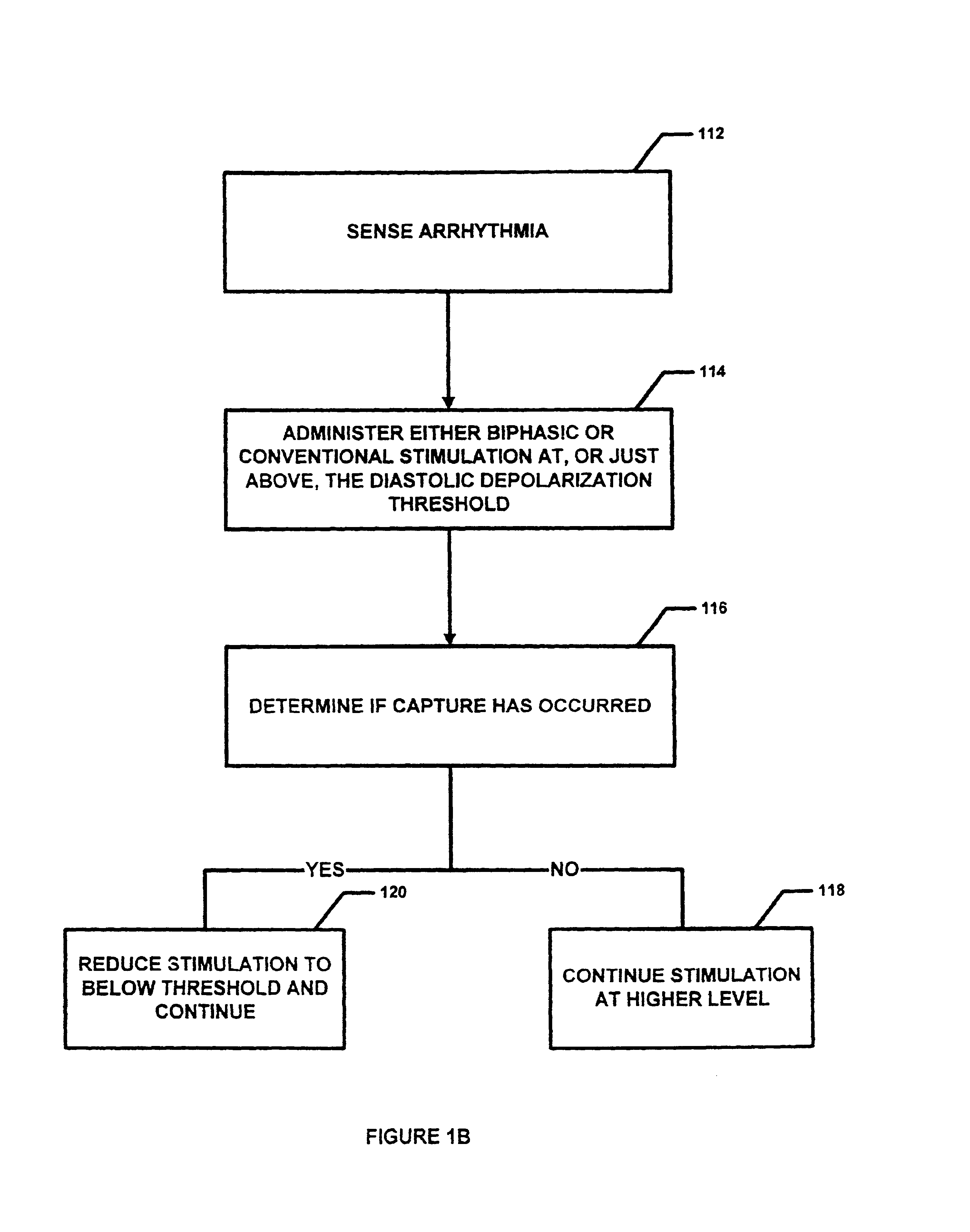Antitachycardial pacing
a technology of anodal pacing and pacing blood, which is applied in the field of antitachycardial pacing, can solve the problems of shortening the battery life, increasing the risk of scar tissue growth at the interface between the implanted cardiac pacer lead and the myocardium, and increasing the risk of scar tissue growth, so as to preserve the conduction and contractility of anodal pacing and enhance myocardial function. , the effect o
- Summary
- Abstract
- Description
- Claims
- Application Information
AI Technical Summary
Benefits of technology
Problems solved by technology
Method used
Image
Examples
Embodiment Construction
[0027]The present invention relates to the use of antitachycardial pacing to break up arrhythmia in the atrium. FIGS. 1A through 1C illustrate examples of methodologies for treating arrhythmias.
[0028]FIG. 1A illustrates a first methodology. Here, a sensor senses the onset of arrhythmia 102. In a preferred embodiment, this sensor comprises an antitachycardial pacing algorithm. Biphasic stimulation is then administered 104. In varying embodiments, this stimulation is either at, or just above the diastolic depolarization threshold. The ICD determines whether capture has occurred 106. If capture has not occurred, then stimulation continues at a slightly higher level 108. This stimulation-capture check-boost stimulation cycle continues until capture occurs. If capture has occurred, then stimulation is continued for a predetermined period of time 110. In a preferred embodiment, stimulation is administered as long as the arrhythmia persists.
[0029]In a preferred embodiment, stimulation puls...
PUM
 Login to View More
Login to View More Abstract
Description
Claims
Application Information
 Login to View More
Login to View More - R&D
- Intellectual Property
- Life Sciences
- Materials
- Tech Scout
- Unparalleled Data Quality
- Higher Quality Content
- 60% Fewer Hallucinations
Browse by: Latest US Patents, China's latest patents, Technical Efficacy Thesaurus, Application Domain, Technology Topic, Popular Technical Reports.
© 2025 PatSnap. All rights reserved.Legal|Privacy policy|Modern Slavery Act Transparency Statement|Sitemap|About US| Contact US: help@patsnap.com



